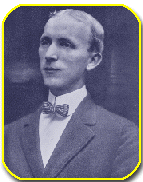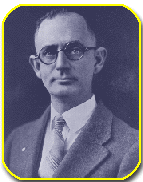
In 1904, 19-year old Andrew Alexander Kroeg Jr. was a senior at the College of Charleston in Charleston, S.C. He possessed a leadership talent that was exact and sure. His mind was on law school and was dedicated to his studies. He was recognized among his fellow students as "jolly, good natured, always having a good word for friend and stranger alike." He was a model gentleman with a thirst for success.
Simon Fogarty Jr., a 17-year-old junior, was the second of four sons of a Charleston grocer. He was an exceptional athlete, earning places on the school's baseball, basketball and football teams. He was regarded by fellow students as a warm friend, quick with a smile. Fogarty motivated with such intent and heart that people were quickly drawn to him.
Playing alongside Fogarty on all three College athletic teams was a 16-year-old sophomore and close childhood friend, Lawrence Harry Mixson. Indeed, some said the two were never seen apart. "Harry" was destined to work for his father's successful seed business in Charleston. It appeared that Mixson inherited his father's business sense as well, commonly known for his attention to detail and his setting of goals. He was also known for his fun-loving spirit, which often provided a needed relief from the intensity of daily college life.
The friendship shared between these three men would grow to become the foundation of Pi Kappa Phi.
Nu Phi
In the fall of 1904, the literary society at the College of Charleston held elections to select its officers. The three chapters of national fraternities that existed on campus developed a "slate" of officer candidates from within their ranks. Kroeg, Mixson, Fogarty and some of their friends were not fraternity members, and with all campus fraternity men and their friends already sworn to the fraternity slate, Kroeg knew it would be tough winning unless an opposition party was quickly organized.
In the course of several meetings at Mixson's home on Wentworth Street, the three men led a small campus movement to form a group called Nu Phi, which stood for "non-fraternity." This organization of 15 men formed its own opposing slate and began campaigning.
The elections were intense. The Nu Phi men even assigned a member to kidnap those who might vote for the fraternity ticket on election day. As the group worked together, and as election day approached, they realized that they possessed the skills, desire and friendship needed to build something of lasting value. In spite of their efforts, however, the Nu Phi ticket did not do well in the final count. It was later discovered that several of the members of Nu Phi had been disloyal to the group and had voted for the fraternity ticket. The loyal Nu Phis agreed to hold a meeting on December 10, 1904, at Simon's home at 90 Broad Street to found a fraternity.
The First Meeting
Seven Nu Phis were at the meeting: Kroeg, Fogarty, Mixson, A. Pelzer Wagener, Thomas F. Mosimann, Theodore Barnwell Kelly and James Fogarty, Simon's younger brother. All were friends and students at the College, and had grown up together in Charleston. Wagener was a superior scholar of Greek and Latin, much like John Heath, the founder of the first fraternity, Phi Beta Kappa, at the College of William and Mary. Wagener would go on to teach Greek and Latin at William and Mary, and appropriately enough, it was he who recommended the letters, "Pi Kappa Phi," and their secret meaning as the official new name of the group.
The Early Years
Kroeg, while studying law at the College of Charleston, saw the need for the fraternity to secure Articles of Incorporation to protect the its' name and existence. Accordingly, Pi Kappa Phi became legally registered in the State of South Carolina on December 23, 1907.
The Fraternity created its first coat of arms in the same year. It originally carried only two stars, and a student's lamp appeared below the chevron. Instead of a lamp and book, the original crest depicted a hand holding a red rose.
The first motto was the Latin: Nil Separta Bit, meaning Nothing Shall Separate Us. The coat of arms changed many times in the early years as historical symbols of Charleston were incorporated. A third star and the swords were added, first turned downward, later upward. The lamp was moved to the crest, and the motto was changed to Greek which now appears, meaning: Nothing Shall Ever Tear Us Asunder.



533 Mallard Creek Church rd.
Charlotte, NC 28262
(704) 503-GIRL
(4475)
Any questions or comments contact
Brian Jackson at (704) 510-1914
or email at [email protected]